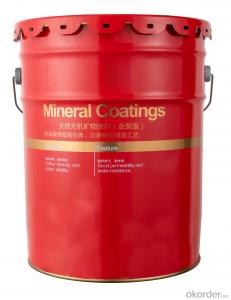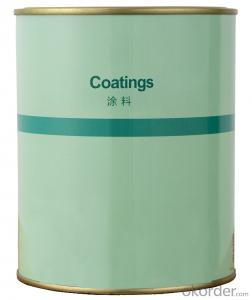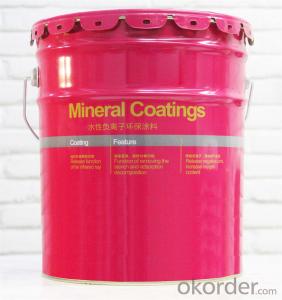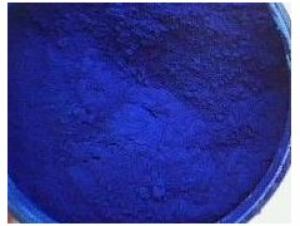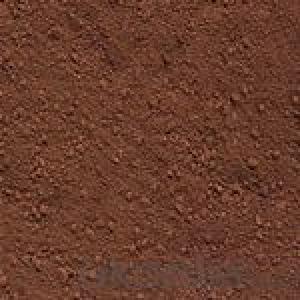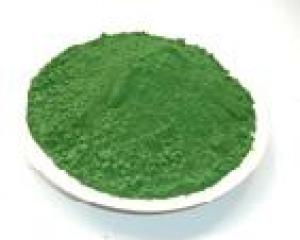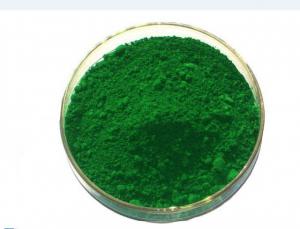Iron oxide red 190
- Loading Port:
- China Main Port
- Payment Terms:
- TT OR LC
- Min Order Qty:
- -
- Supply Capability:
- -
OKorder Service Pledge
OKorder Financial Service
You Might Also Like
Quick Details
· CAS No.: 1309-37-1
· Other Names: Iron oxide (Fe2O3)
· MF: Fe2O3
· EINECS No.: 215-168-2
· Place of Origin: China (Mainland)
· Usage: Ceramic Pigments, Coating Pigment, Cosmetic Pigment, Ink Pigments, Plastic & Rubber Pigment, Leather Pigments, Other
· Model Number: 190
· Type: Iron Oxide
· Style: Inorganic Pigment
· Appearance: Powder
· color: Iron Oxide Red, Yellow, Black, Blue ,green
· wetherability: very good
· certificate: ISO9001:2000
· heat-resistant: very good
Packaging & Delivery
Packaging Details: | 25 kg/ craft paper bag, 22MT/20FCL (Iron Oxide Red); 25 kg/ craft paper bag, 13 MT/ 20FCL (Iron Oxide Yellow); 25 kg/ craft paper bag, 20MT/ 20FCL (Iron Oxide Black) |
Delivery Detail: | Within 2weeks after get the advanced money |
Specifications
synthetic red iron oxide 190
21 years factory
supply CCIC,ISO,SGS inspect
Free samples will sent to the customer
Iron oxide red 190
1. Product Description
1). Bright-colored exquisite powder.
2). Good weatherability (Lightfastness, heat-resistant and alkali resistant)
3). Strong tinting power, excellent coverage and fine dispersion.
4). We can supply iron oxide with different color, specifications and packing
5). Only dissolved in heat strong acid
2. Product detailed Specification
Item | Index |
Primary color |
|
Diluted color |
|
Iron content (Fe2O3) 105℃ drying%≥ | 80 |
Fineness (325 mesh wet sieve residue)%≤ | 0.3 |
Oil absorption, g/100g | 14-20 |
Moisture & 105℃ volatile% | 1.0 |
Water solubles% ≤ | 1.5 |
Water suspended matter PH value | 5-7 |
Relative tinting strength (compared with standard sample%) ≥ | 95 |
Water extract pH ml≤ | 20 |
We also have many of other colors and type, if you have the special request, please email me freely
3. Product Application
brick,concrete, roofing tile, paver, stucco, masonary, paint, coating, rubber, plastic, paper and leather industries etc.
4. Product Packing:
25 kg/ craft paper bag, 22MT/20FCL (Iron Oxide Red);
25 kg/ craft paper bag, 13 MT/ 20’FCL (Iron Oxide Yellow);
25 kg/ craft paper bag, 20MT/ 20’FCL (Iron Oxide Black)
5.superiority
1.accept the inspection of SGS, CCIC and the other international inspection department.
2.Free samples will sent to you.
3.21 years experience.
4.professional skills
- Q:As in like makeup pigments??????
- pigments are severe colored, powder version of the eyshadows. AS FOR THE L'OREAL HIP.... defanatly in specific cases they may well be in comparison to MAC pigments. they're severe high quality. great, vivid, relaxing pigmention. in a sort of colorings. in case you prefer to attain the *POP* much extra, attempt making use of a watch shadow primer. they do wonders! you may purchase the dearer ones from Sephora or the drugstore one that is Loreal shrink. they make the colors extra vivid. does not crease. keeps them on longer. over all great stuff ;D desire i helped(:
- Q:why do plants need more than one pigment for light absorption?
- Pigments are molecules with an array of covalent bonds capable of absorbing a photon of light that has only a certain wavelength. The absorbed wavelength is only a fraction of the continuous range of wavelengths reaching the reaction center of a chloroplast. Each pigment species absorbs a different portion of the spectrum. So most photosynthesis works in combinations of pigments to absorb a across the visible spectrum and somewhat beyond. Some pigments (accessory photosynthesis carotenoid pigments) absorb useful wavelengths to pass the energy to chlorophyll A while the Xanthophyll Cycle pigments absorb potentially harmful high energy wavelengths for dissipation. Accessory pigments provide a range of spectra collection that allowed plants to adapt successfully to environments of differing light conditions. Pigments provide coloration to signal flower or fruit maturity to pollination partners or seed dispersal partners. Anthocyanins and carotenoids perform these communication functions. Phytochrome is a pigment that absorbs one wavelength only to toggle to another shape capable of absorbing at a different wavelength. Algae and plants both use this system to inform them of the time of year so they can synchronize with the best season in their habitat for reproduction efforts to succeed. Plants use phytochrome to regulate the photoperiod of flowering or seed germination.
- Q:I know the difference between the two, but which do you prefer? Which has a better color payoff? And, which do you own more of?
- Pigments they have a better color pay off ?
- Q:Can someone describe the role of accessory pigments in photosynthesis?
- help the primary pigments gather sunlight and adds color to the plant
- Q:PLEASE TRY!, to awnser ANY of the questions below.~What factors cause leaves to change colors. Where do these colors come from?~What are the names of the specific chemical pigments that cause the colors we see (reds, yellows, purples, browns, greens etc.) These are the same pigments (chemical that causes color) that give fruit their different colors.~What is the process (how it happens) that cause leaves to fall off of the branches. Explain at the cell level. (picture)Please try to awnser. Thanks.
- Chlorophyll leaves and Tannin enters,depends on the temperature and seasons
- Q:What are accesory pigments and why are they important?
- Accessory pigments, also called, Photosynthetic Pigments or Chloroplast pigments, are pigments which are present within the cell of a Chloroplast used to harvest a greater spectrum of light.y are colored compounds which absorb and transfer light energy to chlorophyll. Pigments are light-absorbing molecules. In addition to chlorophyll,other pigments, principally yellow and orange carotenoids, as well asother forms of chlorophyll, are also present in green plants. These molecules absorb light and then pass the energy to the chlorophyll and accessory pigments, like the carotenoids, enable the plants to use more ofthe light than is trapped by chlorophyll alone.
- Q:i need pigment in powdered form and i need it to be oil based for my resin project. i was thinking about just crushing up artist oil pastels but i need it to be really fine with no chunks. sooo, i was wondering if anyone sells really fine oil based art pigment powders in a variety of colors. or do you know of i way i could crush up the pastels super fine so it will mix evenly into the resin? (i hope this made sence, i don't know much about art lol)thanks!!!:)
- Hi. okorder /... Those are all pure pigments, no hues or imitations. The prices may seem high, but even a half a pound of pigment is a huge amount. Prices I've seen on other sites are higher. I do not think it will work to crush up pastels, oil or otherwise, because they already have a binder and probably a lot of filler in them -- you will get a very weak color. Hope this helps.
- Q:Explain light activation of pigments (absorption of light by pigments)?
- A pigment is a substance that imparts color by absorbing some frequencies of visible light but not others. For instance, there are a lot of substances that absorb ultraviolet light into the visible spectrum, in other words they also absorb plain violet light. Since they absorb violet light but reflect back the rest of light, they appear yellow. Purple pigments, on the other hand, are quite rare because they absorb purple light (which has the highest energy of visible light) and reflect back everything else. When anything absorbs a photon of electromagnetic radiation (light, x-rays, ultraviolet, infrared, microwaves, gamma rays, radio waves), it is activated which means that it takes the energy of the photon and goes to an energy state that is higher by the same amount of energy that was in the photon. At the molecular level, energy is quantized, meaning its restricted to particular states. For instance, vibrational energy corresponds to infrared light: there are only certain ways, called modes, that a molecule can vibrate in, if it can't vibrate in an appropriate mode, it can't absorb the infrared radiation that corresponds to being promoted to that mode. That's why substances can be transparent. At the higher energy state, the substance might be able to participate in chemical reactions that it would not be able to participate in in a lower state. That's usually what is meant by light activation. So a pigment that absorbs visible or UV light might become activated and react with something or react in ways that it wouldn't be able to in the dark.
- Q:explain how the pigments in colored objects such as clothes differ from plant pigments
- Green pigments absorb light in the red and blue parts of the spectrum and reflect the green back to our eyes. The major functional difference between chlorophyll and say jade green is that only the chlorophyll in living systems can transfer the absorbed light energy and the excited electron to another molecule, thus trapping it. In biology, pigment is any material resulting in color in plant or animal cells which is the result of selective absorption. Some biological material has so-called structural color, which is the result of selective reflection or iridescence, usually done with multilayer structures. Unlike structural color, pigment color is the same for all viewing angles. Nearly all types of cells, such as skin, eyes, fur and hair contain pigment. Butterfly wings typically contain structural color, although many of them contain pigment as well. Creatures that have deficient pigmentation are called albinos. In the coloring of paint, ink, plastic, fabric and other material, a pigment is a dry colorant, usually an insoluble powder. There are both natural and synthetic pigments, both organic and inorganic ones. Pigments work by selectively absorbing some parts of the visible spectrum (see light) whilst reflecting others. A distinction is usually made between a pigment, which is insoluble, and a dye, which is either a liquid, or is soluble. There is no well-defined dividing line between pigments and dyes, however, and some coloring agents are used as both pigments and dyes. In some cases, a pigment will be made by precipitating a soluble dye with a metallic salt. The resulting pigment is called a lake.
- Q:how exactly do pigments work? i know that they absorb every color except the one that we see, but what are the exact physics or whatever behind the selective absorption of the light?
- Different pigments mostly absorb different range at different wavelength of light, but plant -as I know- mostly containing chlorophyll does not absorb green light so we see plants as green.
1. Manufacturer Overview |
|
|---|---|
| Location | |
| Year Established | |
| Annual Output Value | |
| Main Markets | |
| Company Certifications | |
2. Manufacturer Certificates |
|
|---|---|
| a) Certification Name | |
| Range | |
| Reference | |
| Validity Period | |
3. Manufacturer Capability |
|
|---|---|
| a)Trade Capacity | |
| Nearest Port | |
| Export Percentage | |
| No.of Employees in Trade Department | |
| Language Spoken: | |
| b)Factory Information | |
| Factory Size: | |
| No. of Production Lines | |
| Contract Manufacturing | |
| Product Price Range | |
Send your message to us
Iron oxide red 190
- Loading Port:
- China Main Port
- Payment Terms:
- TT OR LC
- Min Order Qty:
- -
- Supply Capability:
- -
OKorder Service Pledge
OKorder Financial Service
Similar products
New products
Hot products
Related keywords












